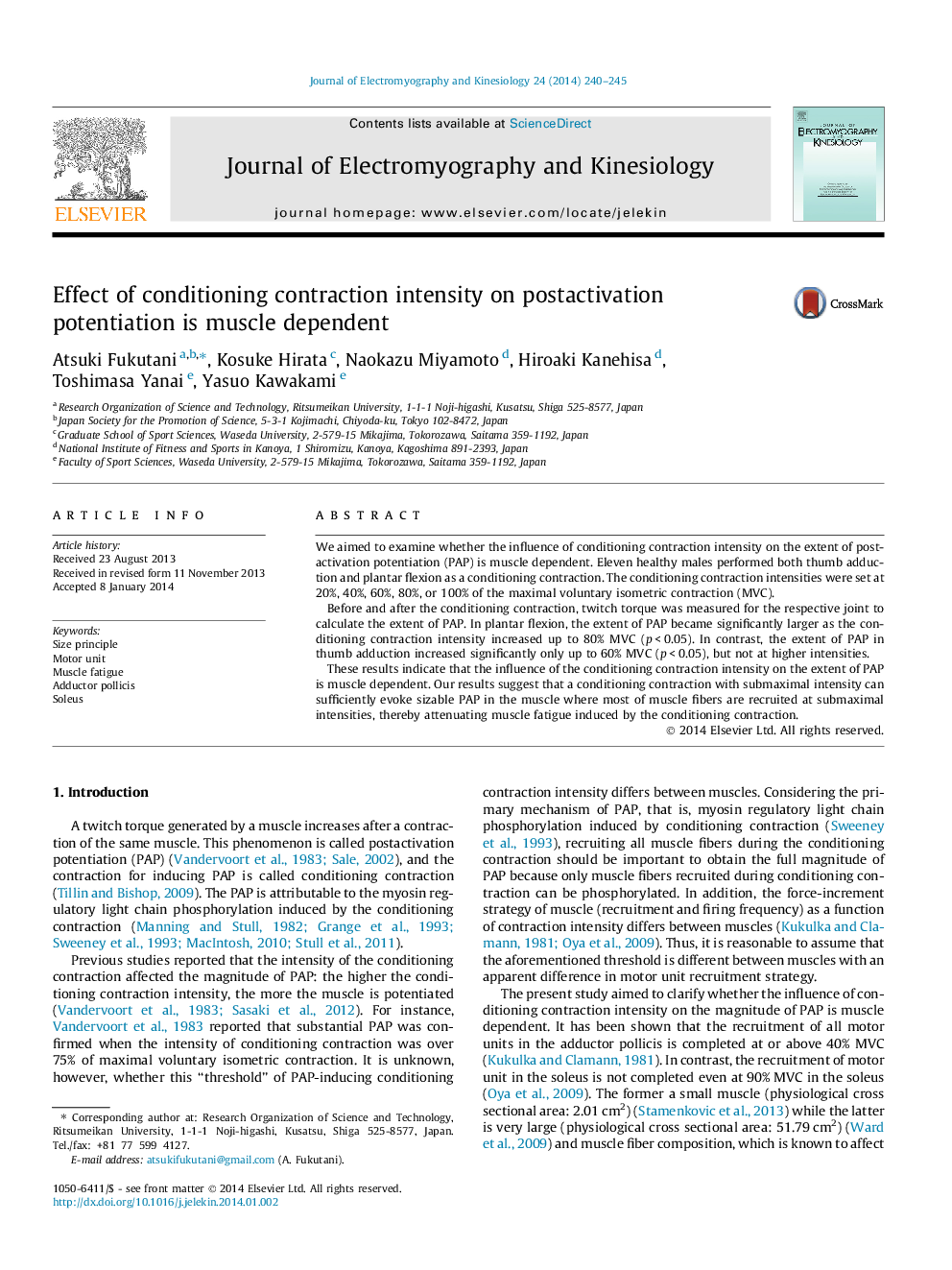| Article ID | Journal | Published Year | Pages | File Type |
|---|---|---|---|---|
| 4064660 | Journal of Electromyography and Kinesiology | 2014 | 6 Pages |
We aimed to examine whether the influence of conditioning contraction intensity on the extent of postactivation potentiation (PAP) is muscle dependent. Eleven healthy males performed both thumb adduction and plantar flexion as a conditioning contraction. The conditioning contraction intensities were set at 20%, 40%, 60%, 80%, or 100% of the maximal voluntary isometric contraction (MVC).Before and after the conditioning contraction, twitch torque was measured for the respective joint to calculate the extent of PAP. In plantar flexion, the extent of PAP became significantly larger as the conditioning contraction intensity increased up to 80% MVC (p < 0.05). In contrast, the extent of PAP in thumb adduction increased significantly only up to 60% MVC (p < 0.05), but not at higher intensities.These results indicate that the influence of the conditioning contraction intensity on the extent of PAP is muscle dependent. Our results suggest that a conditioning contraction with submaximal intensity can sufficiently evoke sizable PAP in the muscle where most of muscle fibers are recruited at submaximal intensities, thereby attenuating muscle fatigue induced by the conditioning contraction.
